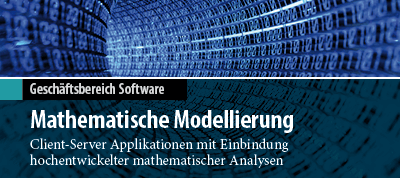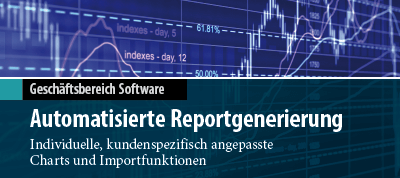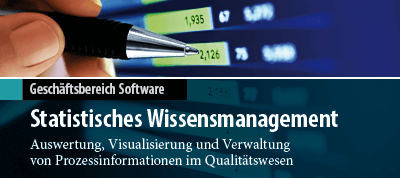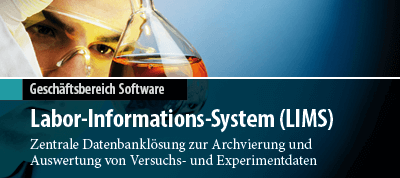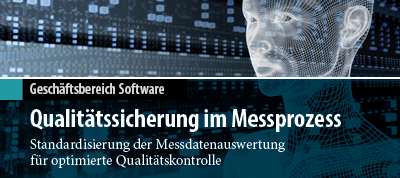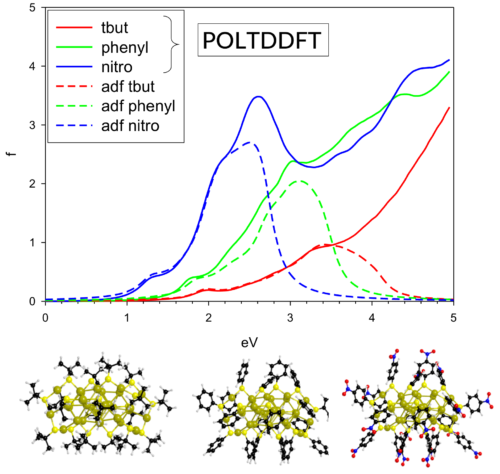Versionshistorie von ADF: 2018 - 2012
Im Folgenden sehen Sie einen Überblick über die neuen Schlüsselfunktionen der jeweiligen Version.
ADF 2018
Neu in ADF 2018
The new features and improvements in the molecular DFT code are mostly focused on excited states, bringing more powerful tools to study nanoparticles and organic electronics.
Highlights in ADF 2018
- Excited state gradients with COSMO solvation and some range-separated hybrids
- Excited state analysis: charge-transfer descriptors, fragment analysis, XCDFT, charge recombination
- Other analysis: Energy Decomposition Analysis with virtuals removed, NBO6 updated
- Improvements: CDFT & LFDFT parallelized, RI-HF default, libxc updated to 4.2.1
- New set up (GUI support) for POLTDDFT fast absorption spectra (UV/VIS, CD)
- Ab Initio Molecular Dynamics through AMS
Complete list of new functionalities in the ADF 2018 release
- Spectroscopy
- Transport properties
- Analysis
- excitation energies: charge-transfer descriptors
- excitation energies: SFO analysis
- NBO6 update
- more analysis options for eXcited Constrained DFT (XCDFT)
- real-space bond energy decomposition (interacting quantum atoms, IQA)
- bond energy analysis in which all virtual orbitals are removed from the fragments
- to study the electrostatic effect if one places fragments together
- to study the electron pair bonding in case of two open shell fragments
- Accuracy and performance
- Default settings changed
- Input handling
- Strict parsing
- Some keywords changed
- DEFINE key removed
- AMS
AMS ist ein mächtiges Tool für komplexe potenzielle Energieaufgaben in der Molekulardynamik, bei linearen Übergängen sowie für das Finden von Übergangszuständen. AMS kann mit den Modulen der Amsterdam Modeling Suite verwendet werden: ADF, BAND, DFTB, MOPAC, ReaxFF und UFF sowie mit externen Berechnungsmodulen.
AMS vereinfacht komplexe Potentialhyperfläche-Aufgaben. Es verbessert die rechnerische Effizienz und eröffnet High-Throughput-Skripting-Workflows mit PLAMS (Python Library for Automating Molecular Simulation).
Mit AMS kann einfach zwischen den AMS-Modulen gewechselt werden. Dies ermöglicht einen guten Workflow. Hierbei können Screenings durchgeführt werden, in denen die Genauigkeit der Berechnungen schrittweise erhöht wird: Zuerst können Kraftfeld- und anschließend DFT-Rechnungen ausgeführt werden.- Erweiterte Potentialhyperflächen-Scans: viele Freiheitsgrade, beliebige Periodizität
- Robustere Optimierung, schneller FIRE-Algorithmus für schnelle Codes
- Vereinfachte Hesse-Matrizen für Übergangszustände
- Fortgeschrittene Thermo- und Barostate zur Optimierung von molekular-dynamischen Berechnungen. (Unterstützt Programme: AIMD, ADF, BAND, MOPAC und DFTB)
- Eigenschaften: Frequenzen, Phononen, Spannungen und elastische Tensoren
- Mit PLAMS und AMS können Workflows problemlos selbst geskriptet werden
- Doppelte Parallelisierung für numerische (zweite) Ableitungen
Apart from this new functionality and performance improvements, certain bugs have been fixed.
New input parsing
The input file parsing for ADF and its properties programs has changed from the 2017 to the 2018 version.
New syntax for a few keywords
In order to adapt ADF to the new (more strict) input format, the syntax of a few keywords had to be changed. The following table contains the list of keywords that have changed in the ADF2018. Note that the block key DEFINE was removed.
| ADF2017 key | ADF2018 key / comments |
|---|---|
| CorePotentials | CorePotentials is now a block (and not an general key/block) |
| Define | removed |
| Dependency | Dependency is now a block (and not a key) |
| EField | Split into EField and PointCharges |
| ETSNOCV | ETSNOCV is now a block (and not a key) |
| Excitations -> Davidson | Excitations -> Davidson is now a block (and not a key) |
| Excitations -> Exact | Excitations -> Exact is now a block (and not a key) |
| Geometry -> Converge Value | Geometry -> Converge -> Grad Value |
| Geometry -> Frequencies | Geometry -> Frequencies is now a block (and not a key) |
| Geometry -> TransitionState | Geometry -> TransitionState is now a block (and not a key) |
| Integration Value | Integration -> Accint Value |
| LinearScaling | LinearScaling is now a block (and not an general key/block) |
| ModifyStartPotential | ModifyStartPotential is now a block (and not an general key/block) |
| Occupations | Split into Occupations and IrrepOccupations |
| Restart -> Value | Restart -> File -> Value |
| Response -> Units | Removed optional units for FrqBeg and FrqEnd in Response block |
| SCF -> ADIIS | SCF -> ADIIS is now a block (and not a key) |
| SCF -> ARH | SCF -> ARH is now a block (and not a key) |
| SCF -> DIIS | SCF -> DIIS is now a block (and not a key) |
| SlaterDeterminants | SlaterDeterminants is now a block (and not an general key/block) |
| SOPert | SOPert is now a block (and not a key) |
| Thermo -> T | Split into Thermo -> TMin and TMax |
Strict parsing of input file
In ADF2018 exact keyword matching is used, meaning that keywords abbreviations (or extensions) are not allowed. In ADF2017 (and previous versions) the parsing of the input file was tolerant and it would allow for abbreviations and extension of keywords.
In the example below, only the first version is allowed in ADF2018, while the second and third version will trigger an input syntax error:
# This is the proper input syntax:
SCF
Converge 1.0E-7
End
# In ADF2017 you could (for some keywords) use abbreviations. e.g.:
SCF
Conv 1.0E-7
End
# or extensions. e.g.:
SCF
Convergence 1.0E-7
End
# Keywords abbreviations and extensions are NOT ALLOWED in ADF2018:
ADF 2017
Neu in ADF 2017
In comparison to ADF 2016, the ADF 2017 release offers the following new functionality:
- Basis sets
- Model Hamiltonians
- Spectroscopy
- Ligand Field DFT (LFDFT)
- direct electron spin-spin term in ZFS (zero field splitting)
- rotational g-tensor
- magnetic properties with time-dependent current DFT
- damped (complex) first hyperpolarizabilities
- damped (complex) second hyperpolarizabilities
- CV(n)-DFT: constricted variational DFT for singlet-triplet excitations
- Transport properties
- Analysis
- Accuracy and performance
- Default settings changed
- element 113 is named Nihonium (Nh) instead of Ununtrium (Uut),
- element 115 is named Moscovium (Mc) instead of Ununpentium (Uup),
- element 117 is named Tennessine (Ts) instead of Ununseptium (Uus), and
- element 118 is named Oganesson (Og) instead of Ununoctium (Uuo), following IUPAC
Apart from this new functionality and performance improvements, certain bugs have been fixed.
ADF 2016
Neu in ADF 2016
- Model Hamiltonians
- Interface to LibXC: a library of exchange and correlation functionals
Thanks to the new interface to the LibXC library, many new XC functionals are available in ADF, including: MVS, N12, CAM-B3LYP, WB97X-V (see the LibXC website for the complete list). In ADF most LibXC functionals can be used in combination with geometry optimization, TS, IRC, LT, numerical frequencies, and excitation energies (ALDA or ALDAX kernel used). For a few GGA LibXC functionals analytical frequencies can be calculated, and one can use the full kernel in the calculation of excitation energies. For the LibXC range separated functionals, like CAM-B3LYP, the kernel is approximated, with a possible double counting of exchange. For the range separated functionals WB97, WB97X, and WB97X-V one can use the full kernel in the calculation of excitation energies. - Range separated hybrids with error function
Thanks to the new Hartree-Fock RI scheme, range separated hybrids functionals that use the error function as switching function are now available (in previous version only range separation with the Yukawa switching function was possible, e.g. CAMY-B3YLP). Among the newly available functionals are: CAM-B3LYP, wB97, WB97X-V and LRC_wPBE. - SM12: solvation model 12
Continuum solvation based on the Minnesota's Solvation Model 12 (SM12), JCTC 9 (2013) 609 . Implemented in ADF, for single point calculations, by Craig Peeples in the group of Georg Schreckenbach, paper in preparation. - COSMO solvation model: defaults
Default COSMO surface changed from Esurf to Delley. The new defaults lead to more reliable geometry optimizations and harmonic frequencies calculations when using the COSMO solvation model. - FDE with external orthogonality
(Expert option) Implementation of external orthogonality into the FDE framework in ADF by Dhabih Chulhai and Lasse Jensen, JCTC 11 (2015), 3080. - CDFT: constrained density functional theory
(Expert option). Charge constraints are supported. Implemented in ADF by Michele Pavanello and Pablo Ramos (paper submitted), based on the method described by Wu and Van Voorhis, PRA 72 (2005) 024502.
- Interface to LibXC: a library of exchange and correlation functionals
- Spectroscopy
- excitation energies
- singlet-triplet and spin-orbit coupled kernel range-separated functionals
For the range separated functionals singlet-triplet and spin-orbit coupled excitations can be calculated. - CV(n)-DFT: constricted variational DFT
The constricted nth order variational density functional method (CV(n)-DFT) is a method in which the occupied excited state orbitals are allowed to relax in response to the change of both the Coulomb and exchange-correlation potential in going from the ground state to the excited state. Implemented in ADF for singlet-singlet excitations by Mykhaylo Krykunov and Tom Ziegler, CP 391 (2011) 11 , JCTC 9 (2013) 2761. - Quadrupole oscillator strengths
For the short wavelengths used in hard X-ray spectroscopy, the dipole approximation may not be adequate. In particular, for metal K-edge X-ray absorption spectroscopy (XAS), it becomes necessary to include quadrupole intensities. Implemented in ADF by Andrew Atkins in the group of Christoph Jacob, based on JCP 137 (2012), 204106. - NTO: natural transition orbitals
Natural transition orbitals, JCP 118 (2003) 4775 , are the closest you can get to visualizing an excitation as a one-electron excitation from one orbital to another.
- singlet-triplet and spin-orbit coupled kernel range-separated functionals
- Fast approximate TDDFT
- TD-DFT+TB
In TD-DFT+TB excitation energies are calculated using DFT molecular orbitals and TD-DFTB coupling matrices. This method will speed up the calculation drastically in comparison to the standard time needed for TDDFT calculations of excitation energies. This method is best suited if a (meta-)GGA or LDA is used in the SCF. Implemented in ADF by Robert Rüger in the group of Thomas Heine (http://arxiv.org/abs/1603.02571). - sTDA, sTDDFT
The simplified Tamm-Dancoff approach (sTDA), JCP 138 (2013) 244104 , and simplified time-dependent DFT approach (sTDDFT), CTC 1040-1041 (2014) 45 , by Grimme et al. are implemented in ADF. These methods are best suited if a (meta-)hybrid or a range-separated-hybrid is used in the SCF. These methods will speed up the calculation drastically in comparison to the standard time needed for TDA or TDDFT calculations of excitation energies for hybrids.
- TD-DFT+TB
- XES: X-Ray emission spectra
The calculation of XES in ADF uses orbital energy differences between occupied orbitals to model the X-ray emission energies. Even though it is the simplest possible approximation for the calculation of XES spectra, it has been shown to work well for V2C-XES (valence-to-core X-ray emission spectroscopy) spectra of transition metal complexes. Implemented in ADF by Andrew Atkins et al. in the group of Christoph Jacob, PCCP 15 (2013) 8095 . - DIM/QM SEROA: surface-enhanced Raman optical activity
Implementation of SEROA in the DIM/QM framework in ADF by Dhabih Chulhai and Lasse Jensen, JPCA 118 (2014), 9069.
- excitation energies
- Transport properties
- Charge transfer integrals with FDE: charge separation and arbitrary spin configuration
Extension of the possibilities of calculating charge transfer integrals with FDE. Implemented in ADF by Michele Pavanello and Pablo Ramos and others, JCP 140 (2014) 164103 , JPCB 119 (2015) 7541 , paper submitted.
- Charge transfer integrals with FDE: charge separation and arbitrary spin configuration
- Analysis
- adf2damqt: DAMQT interface
Interface (adf2damqt) to the 3rd party DAMQT 2.0 package (analysis of electron density in molecules),Computer Physics Communications 192 (2015) 289. - FOD: fractional orbital density
Analysis method for static electron correlation by Grimme and Hansen, Angewandte Chemie IE 54 (2015) 12308 . Fractional occupation number weighted electron density (FOD) can be plotted with ADFview.
- adf2damqt: DAMQT interface
- Structure and Reactivity
- Molecular dynamics (MD) and NEB transition states search via ASE (see GUI release notes)
- Accuracy and performance
- New Hartree-Fock RI scheme (for Hybrid functionals)
The new RI scheme is not used by default (except when using LibXC range separated hybrids), but it offers certain advantages over the default scheme. It uses a large fit set, including H and I fit functions and it is presumably more stable and accurate than the default scheme (especially for f-block elements or gradients calculations). - New SCF module
Especially for large calculations, this new SCF method scales much better in parallel compared to the original SCF and it also reduces the disk I/O during the SCF.
- New Hartree-Fock RI scheme (for Hybrid functionals)
Scripting
- ASE interfaced with the ADF modeling suite programs
The Atomic Simulation Environment (ASE) tool collection suite was designed as a flexible, easy-to-use, and customizable approach for the manipulation of quantum chemical models as well as for setting up and running the calculations required and for the analysis of the final results. D. Coupry and T. Soini at SCM have built ASE calculators for the main codes in the ADF Modeling Suite, thus opening up several of the methods in ASE. - PLAMS: Python Library for Automating Molecular Simulation
The PLAMS Python library, developed at SCM by Michał Handzlik, aims at facilitating scripting and work-flow automation in molecular modeling. PLAMS takes care of input preparation, job execution, file management and output processing and comes with interfaces to ADF, BAND and DFTB. SCM is making PLAMS available to the community as open-source (LGPL), contact SCM for details. Together with the related pyADF project led by Prof. Christoph Jacob, PLAMS is one of the components in the ongoing open-source project Computational Chemistry made Easy , led by Prof. Lucas Visscher, in which SCM also participates (contact Prof. Visscher or SCM for more information). - FlexMD (Flexible multi-scale Molecular Dynamics simulation): new features
FlexMD is a python library developed by Rosa Bulo's group at Utrecht University for molecular dynamics, specialized in multi-scale simulations. It is currently an expert option that requires scripting experience. The 2016 release includes a tabulated PBE-based force field for water suitable for QM/MM simulations. The center of the QM region can now also be defined more flexibly, e.g. as the position of a hydronium or hydroxide ion, important for simulating proton transfer processes. - adfprep and adfreport : New features for the command line tools adfprep (job preparation) and adfreport (results extraction):
- Support for ADF, BAND, ReaxFF, DFTB, UFF, Mopac
- Fragment support
- Geometry changes, modify atom types, add groups
- Support for SDF files
ADF 2014
Neu in ADF 2014
- DFT-MBD dispersion corrected XC functional
The MBD@rsSCS method is implemented. MBD@rsSCS is designed to accurately describe long-range correlation (and thus dispersion) in finite-gap systems, including at the same time a description of the short-range interactions from the underlying DFT computation of the electronic structure. MBD@rsSCS includes both screening effects and treatment of the many-body vdW energy to infinite order, and employs a range-separation (rs) of the self-consistent screening (SCS) of polarizabilities and the calculation of the long-range correlation energy. It has been parametrized for the elements H-Ba, Hf-Rn, and for the functional PBE and PBE0. - Intensity selected excitation energies
Use only those single orbital transitions, which are pairs pairs of an occupied and virtual orbital, as guess vectors, for which the oscillator strength of the single orbital transition is larger than a threshold. - NMR spin-spin couplings with subsystem DFT
The calculation of NMR spin-spin couplings has been made possible in case of FDE. - Distance difference restraints in optimizations
- Charge model 5
The charge model 5 (CM5) uses the Hirshfeld analysis in combination with a parametrization to yield atomic charges that can accurately reproduce dipole moments obtained from experimental results. - Improved density fitting with radial spline functions and Zlm's
The default density fitting scheme changed to ZlmFit instead of STO fit. The ZlmFit has been improved compared to the previous release. It has been included for almost all properties. It is possible to use locally a better fit (and grid), for example, for the active site in a molecule. Note that possibly not all options for frozen density embedding are working correctly, in which case one should use STO fitting. - NMR chemical shifts: spin-orbit gauge correction term, unscaled ZORA
I n the ADF2008.01 version a bug was introduced in the spin-orbit part of the calculated chemical shielding, which caused the calculated chemical shielding to be gauge dependent. This has been solved by including a spin-orbit gauge dependence term.
There is gauge dependence if the scaled ZORA method is used in the calculation of NMR chemical shieldings. Therefore the default method for NMR chemical shielding calculations is changed to use the unscaled ZORA method.
In case of hybrids one should use all electron basis sets if one wants to calculate NMR chemical shieldings. The use of frozen cores and hybrids gives gauge dependent results for the NMR chemical shieldings, therefore the NMR program will stop in this case. - Much smaller TAPE21 (.t21) result files
For analytical frequencies calculations the ADF result file (TAPE21 or .t21) is much smaller, especially for big systems. - GPGPU (CUDA) implementation for selected bottlenecks
A number of algorithms has been ported to CUDA, including evaluation of matrix elements by numerical integration on a grid. Using CUDA speeds up calculation of the Fock matrix for LDA and GGA functionals significantly. Also the performance of the energy gradients (forces) and analytical second derivatives (vibrational frequencies) is improved this way. Executables containing the GPU code (currently only for 64-bit Linux) will be available on request.
The paper by Hans van Schoot and Luuk Visscher describing the implementation and some benchmark results will be published early 2015. - Local quality
You now can have atom dependent (local) quality for fit and grid. Via ADFinput you can easily set this up using regions. - Distance cut-offs for Hartree-Fock exchange integrals changed
Stricter settings for distance cut-offs in calculating Hartree-Fock exchange integrals have been implemented. - Scalable SCF: better parallelization and less memory
A new SCF algorithm has been implemented, Scalable SCF. It scales more favorably with CPUs and also enables the study of larger systmes through reduced memory usage. Scalable SCF is the default and is switched off for features for which it is not supported. - COSMO runs in parallel
The continuum solvation model COSMO now also runs in parallel, making it much faster on the typical machine. - RamanRange: include A1 representation to the list of Raman-active ones
ADF 2013
Neu in ADF 2013
Functionality
- range-separated xc functionals
- DIM/QM: discrete interaction model/quantum mechanics
- full XC kernel in excitation energy calculations
- excitations as orbital energy differences (DFT-TS)
- approximate spin-orbit coupled excitation energies open shell molecule
- TDA in subsystem TDDFT with hybrid functionals
- transport properties: green: wide-band-limit
- charge transfer integrals with FDE
Analysis
- interface to the NBO 6.0 package of Prof. Weinhold
- NCI: non-covalent interactions index
- SEDD: single exponential decay detector
Accuracy
- Becke grid for numerical integration
- density fitting with radial spline functions and Zlm's
Speed
- distance cut-offs in calculating Hartree-Fock exchange integrals
- scalable SCF
ADF 2012
Neu in ADF 2012
- Functionality
- transport properties: non-self-consistent Green's function calculation
- zero-field splitting (ZFS) ground state due to spin-orbit coupling
- ESR g-tensor and A-tensor: perturbative spin-orbit coupling
- paramagnetic NMR chemical shifts
- state selective optimization excitation energies
- VSCRF (vertical excitation self-consistent reaction field)
- SCRF and a protein environment
- XC functionals: revTPSS, HTBS, Grimme-D3-BJ, dDsC
- Analysis
- metaGGA and metahybrid energy decomposition analysis
- improved energy analysis hybrids
- AIM critical points and bond paths
- NBO analysis unrestricted
- Accuracy
- SCF convergence method LISTi
- improved optimizer for minima and Transition States








